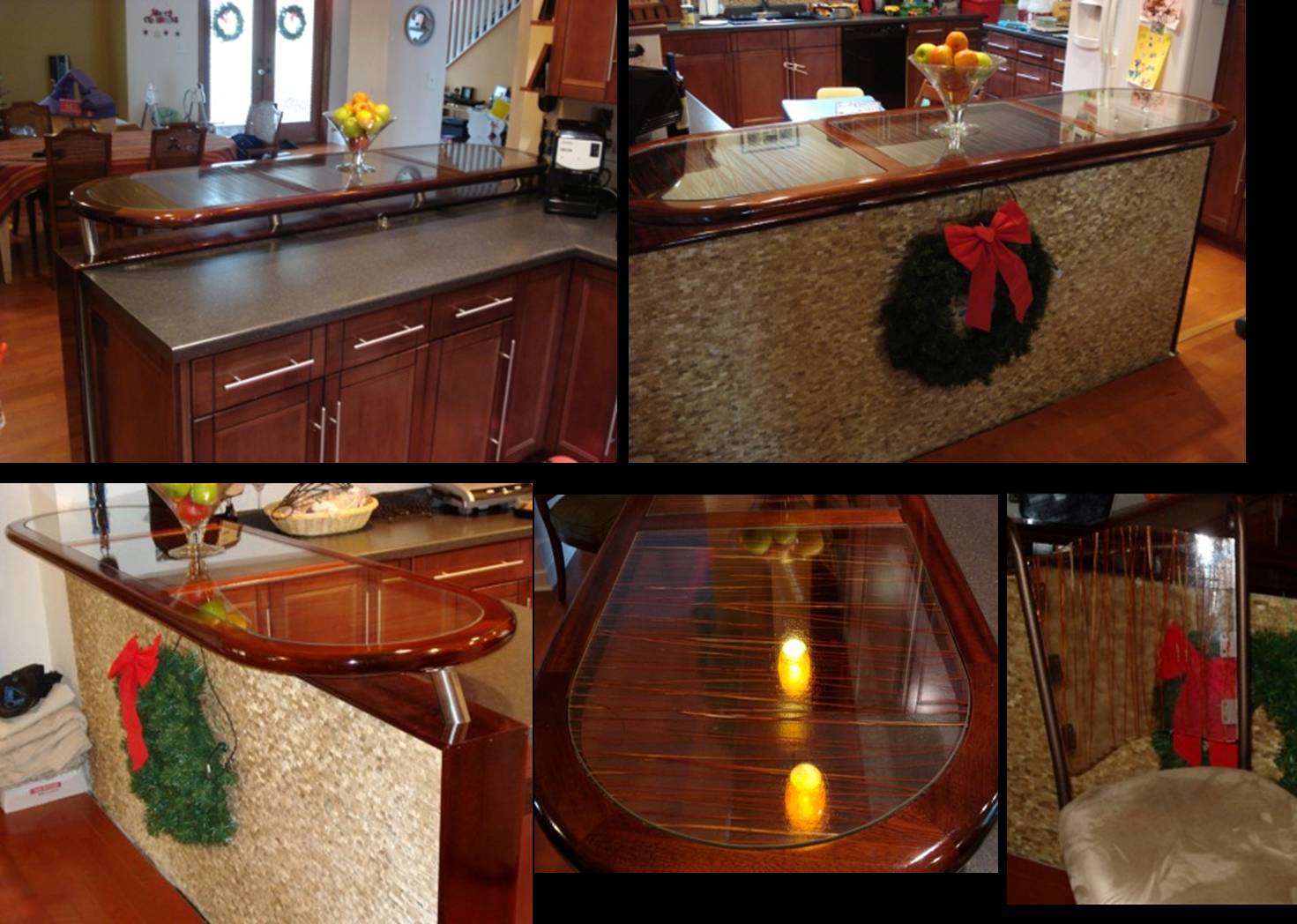Question
I'm hoping someone can offer help on a problem I have. Although I'm pretty good at searching the net for information, I canít find any good advice on this situation anywhere. So, I built a curved mahogany table top and decided to use Potassium Dichromate to color the wood and it turned out beautifully. After coloring with the Potassium Dichromate I applied a 50% thinned seal-coat of Behlen Rockhard varnish and Behlen water based filler.
Here's my problem; in sanding off the filler I have sanded through the coloring in places. My question is; what to do next? Should I attempt to "touch up" the light areas with more Potassium Dichromate? Would that react strangely with the filled wood? Any help would be very much appreciated.
Forum Responses
(Finishing Forum)
From contributor O:
Make a test panel. Potassium dichromate is not a standard stain, but a chemical which interacts with the chemistry of the wood. I would suggest that unless you happen to run into someone with exactly the same circumstance that it would be difficult to know how the witches brew of potassium dichromate, mahogany, Behelens Rock hard and their water based filler will react. You have possible short and longer term issues about either leaving the dichromate on the wood, rinsing, filler absorption, penetration under the varnish. Try a few test panels (finished all the way through). Can you think of a quick way to force some quick aging?
Do not use PD or other toxic chemical mordants on any job without knowing beforehand what results you want to obtain and what finishes and finish sundries (filler), etc youíre going to use and know that they will work and produce the desired end product. As has already been said - samples, samples first - never on the project first!
I canít say enough good things about ICA America's customer service. I called on the phone several times with appallingly ignorant questions and got through friendly advice and instructions every time. Now that I'm all set up for it, I'll be hard pressed not to use this finishing process for projects in the future.
The inserts are a resin with reeds embedded in it. Itís called Varia from a company called 3Form. You can get it with a bunch of different things in it. I used the same material to make backs for the bar stools. It machines with woodworking tools and can be heat formed. I built a curved form and popped the backs in the oven. This is my first time making anything out of hardwood for inside the house. This website has been a great source of info. Thanks for all the help.
